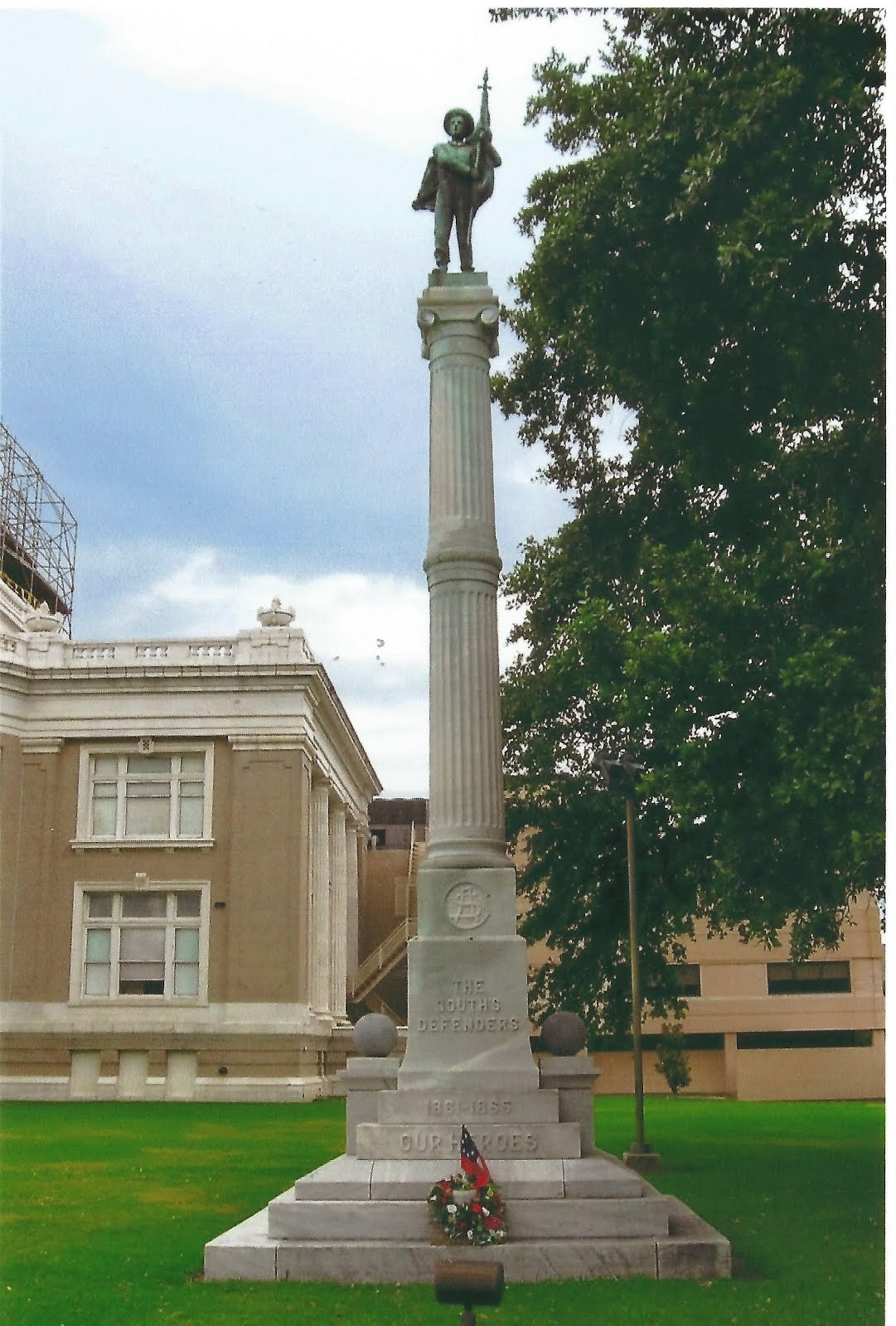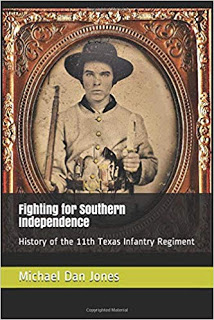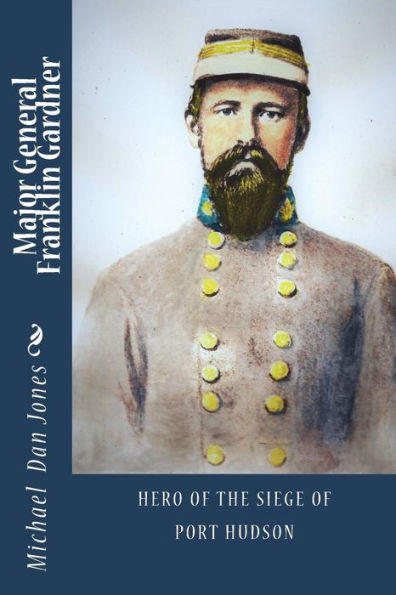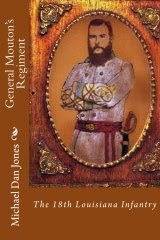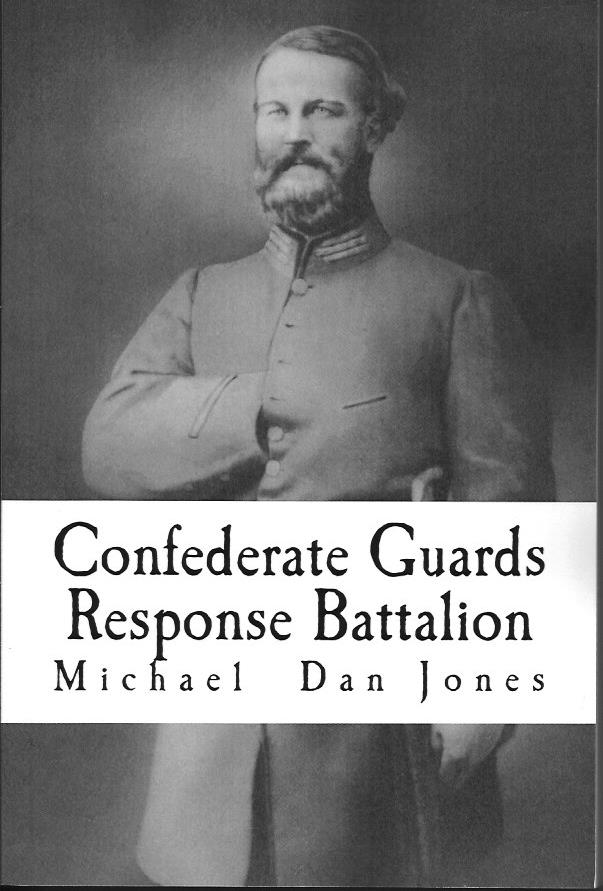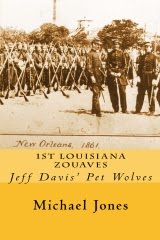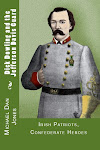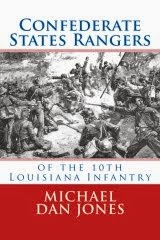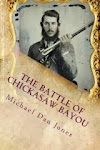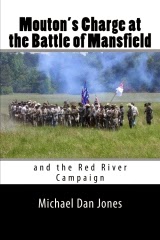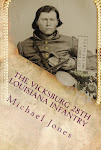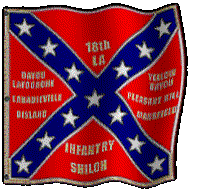 | |
| Sheridan's last charge at Third Winchester (Library of Congress) |
[Excerpted from Confederate States Rangers of the 10th Louisiana Infantry by Michael Dan Jones (Createspace.com 2013)]
 | |||||
| Maj. Gen. Jubal Early |
The second phase of the Shenandoah
Valley Campaign began after the Confederate victory at the Second Battle
of Kernstown when Grant was convinced that Early was not leaving the
Valley and he would have to commit a larger force and a better general than
Hunter to get rid of him. The Valley was effectively back under control of the
Confederate States of America. In addition, raiding Confederates had
demonstrated they could retaliate against Northern cities for the Northern
atrocities committed against the Southern civilians in the Valley. Grant
met with Lincoln July 31 and he told the Northern president that he needed
the services of 33-year-old Major General Philip H. Sheridan in the
Shenandoah Valley, who at the time was the commander of the cavalry in the Army
of the Potomac. Grant got the go ahead for the changes he wanted and made the
desired assignments. When Hunter learned that his duties had been reduced
to administrative, he quickly submitted his resignation and Grant accepted it.
Sheridan was just as ruthless as Hunter, but a much better general. The four
Federal military districts then in the Shenandoah area were consolidated into
the Middle Military Department under Sheridan. “Little Phil” was to take orders
from no other general than Grant. Not only would he command Crook’s 8th
Corps, but also Wright’s 6th Corps and the 19th Corps under Major General
William Emory. He also would have the cream of the crop of young, combat
tested, cavalry commanders – brigadier generals James H. Wilson, Wesley
Merritt, and George Armstrong Custer. Sheridan took command on August 6 at
Monocacy Junction. His army numbered 37,000 men.
While the Federals were receiving
reinforcements, so was Early. Lee sent the Valley Army one of his top
commanders, Lieutenant General Richard H. Anderson, commander of the First
Corps, and Major General Joseph Kershaw’s infantry division, Major General
Fitzhugh Lee’s cavalry division, and a battalion of artillery. This bolstered
Early’s command to about 15,200. The Confederates also had the advantage of
fighting on their home ground with the support of the people. Sheridan, by
contrast, would earn the hatred of the people of the Valley. Colonel John S.
Mosby’s 43rd Virginia Cavalry Battalion (Partisan Rangers) was wreaking havoc
behind Federal lines. Mosby destroyed a large Federal wagon train destined for
Sheridan on August 13. Now short of rations, and with Kershaw’s reinforcements
on the way to Early, Sheridan withdrew to a more secure location further north.
But the Federal cavalry division under Merritt turned the tables on the
Confederates when he caught Kershaw’s division crossing the Shenandoah and
attacked. He captured about 300 prisoners, but only momentarily delayed
Kershaw. Sheridan had hoped that the Confederates would be drawn into a trap he
was planning, but the wily old Early declined the invitation. Early withdrew
into his entrenchments at Fisher’s Hill. He also received a new cavalry
commander to take the place of the still ailing Ransom, Major General Lunsford
Lomax. But the Confederate cavalry had been greatly reduced by the disaster at
Moorefield and would be of limited use during the rest of the campaign.
Early tried to make good use of his
strengthened army. As indicated by Monier’s journal, there was a lot of
maneuvering and skirmishing throughout August, but no major battles. Both sides
were looking for an opportunity to strike. It was in the action on August 25 at
Shepherdstown that the Louisiana Brigade suffered a serious loss. Colonel
William Monaghan was killed in action. Unfortunately for Early and the Valley
Army, heavy fighting at Petersburg August 26, made it imperative that
Lee recall Anderson and Kershaw’s division back to the Army of Northern
Virginia. But with all the Federal activity in the Valley, Kershaw wasn’t able
to get back to General Lee for a couple of more weeks. Early was now
hopelessly outnumbered and it wouldn’t take long for the aggressive Sheridan to
make his move. Early’s army had been reduced to 8,500 effective infantry, 2,900
cavalrymen in both Fitzhugh Lee’s and Lomax’s divisions, three battalions of
artillery – about 12,000 men of all arms.[1]
Third Battle of Winchester
Sheridan hoped to administer the coup
de grâce to the Confederate Army of the Valley on September 19, 1864 at
the Third Battle of Winchester, also called the Battle of Opequon Creek by the
North. Early was not expecting an attack from the Yankees, having
underestimated Sheridan, and had split his army, taking Gordon’s and Rode’s
divisions with him to Martinsburg, with artillery and cavalry, 20-miles away,
for a raid there. Ramseur’s division was solidly ensconced on a plateau outside
Winchester with cavalry on each flank and artillery in support. Wharton’s
infantry and McCausland’s cavalry, under Breckinridge, were at
Stephenson’s Depot six miles away. Sheridan had massed his army and found it
the opportunity he had been waiting for – to destroy Early piecemeal. Wright’s
6th Corps and Emory’s 19th Corps were to attack Ramseur, while Crook’s 8th
Corps would flank him from the right. Merritt’s and Averell’s
cavalry divisions would attack Wharton. But getting to Ramseur would not be
easy. He was behind Opequon Creek and was well dug in on the plateau east of
Winchester and between Rose Bud Run and Abraham’s Creek. When Early got to
Martinsburg on September 18, he found messages which indicated that Grant had
recently been there meeting with Sheridan. He was sure that meant an attack was
imminent and ordered Breckinridge, Wharton, McCausland, Gordon and Rodes all
back to Winchester to fall in on Ramseur This would be the third battle fought
by the Louisianians at Winchester. The first was in the 1862 when the Hays’
brigade made a dramatic charge that helped win the battle. The second was in
the Gettysburg Campaign when Hays’ brigade stormed a key Yankee fort at
Winchester, and Stafford’s brigade helped cut off the Federal retreat at
Stephenson’s Depot. The third battle there would be dramatically different.
The battle started at about 3
o’clock in the morning when Wilson’s cavalry division crossed the creek at the
Berryville Road, which ran through a ravine and some woods which shielded them
from Confederate observation. They met Ramseur’s skirmish line at the base of
the plateau and quickly drove them back. Three divisions of the 6th Corps
then came up as the Confederate artillery opened up on them. Ricketts’ division
formed on the right and Getty’s division on the left. Brigadier General David
A. Russell’s division was in reserve. Up to that point everything went
smoothly, but the Sixth Corps had also brought up its supply wagons which
clogged the road for the 19th Corps, and which delayed the whole attack. Early
arrived at 10 o’clock before the main Yankee attack had begun. Gordon’s
division then arrived and he put his men in line of battle in a thicket and on
the edge of a long field. Rodes soon arrived and his division and filled the a
gap between Gordon and Ramseur. Captain George P. Ring of the 6th Louisiana
gave an eyewitness account of the Federal attack. Ring said the bluecoats came
“in beautiful order with their bright gun barrels reflecting back in the rays
of the sun in a way to make your eyes water.” The Confederates then advanced
their line to meet the enemy in an open field battle. Both blue and gray lines
kept advancing without opening fire until they were about 200 yards apart.
Halting, the opposing forces then exchanged volley fire for 10 minutes. Ring
said that “Southern pluck was too much for our Yankee friends.” When the
Federals retreated, he added, “We of course raised a Louisiana yell.” Gordon’s
entire division charged after them, with the Louisianians in advance of
everyone. York, seeing his brigade badly exposed, drew back a hundred yards and
repulsed two counterattacks. Ring said, “. . . I think and firmly believe that
every man in Hays’ and Stafford’s brigades killed his man that day.” At Stephenson’s Depot, which was Early’s left, Wharton’s
infantry and McCausland’s cavalry, were pressed back by Merritt’s and Averell’s
cavalry. Breckinridge, however, managed a fighting retreat in good order. The
Confederates had to fight off Federal cavalry attacks the whole way to the main
body and did not reach it until 2 o’clock that afternoon. When they did reach
Early, Colonel George S. Patton’s brigade of Wharton’s division was sent to the
Confederate left to bolster Fitzhugh Lee’s cavalry on that flank. But the
Confederates were being overwhelmed by sheer numbers as the 19th and 8th
corps became engaged. The gray jackets were driven back into a V
formation and were being engulfed by a double envelopment on the flanks, much
as they had done to Crook’s corps at Second Kernstown. When the a gap was
opened in the Federal brigade, Gordon’s and Rodes’ divisions drove through it
and the Northerners were in danger of a collapse. General Rodes, however, was
mortally wounded when struck behind the ear by a shell fragment and Russell’s
division came up to plug the gap, but Russell himself was killed. The
counterattack by the Federals sealed the breach, but at a high cost to them.
Finally, a massive cavalry charge by Merritt and Averell succeeded in
collapsing the Confederate left flank and the whole gray line collapsed as
well. Colonel George S. Patton, the grandfather of the
 |
| Brig. Gen. Zebulon York |
The Confederates suffered 4,000
casualties in the battle, and the Federals 5,081. Half of the Confederate
casualties were captives, while 80 percent of the Federal casualties were
killed and wounded. The Louisiana brigade’s share of the casualties was 154.
The 10th Louisiana had four men killed, 4 wounded, one wounded and
captured and five captured for a total of 15. Colonel Waggaman was wounded
in the shoulder. The Confederate States Rangers had no casualties in the
battle.
